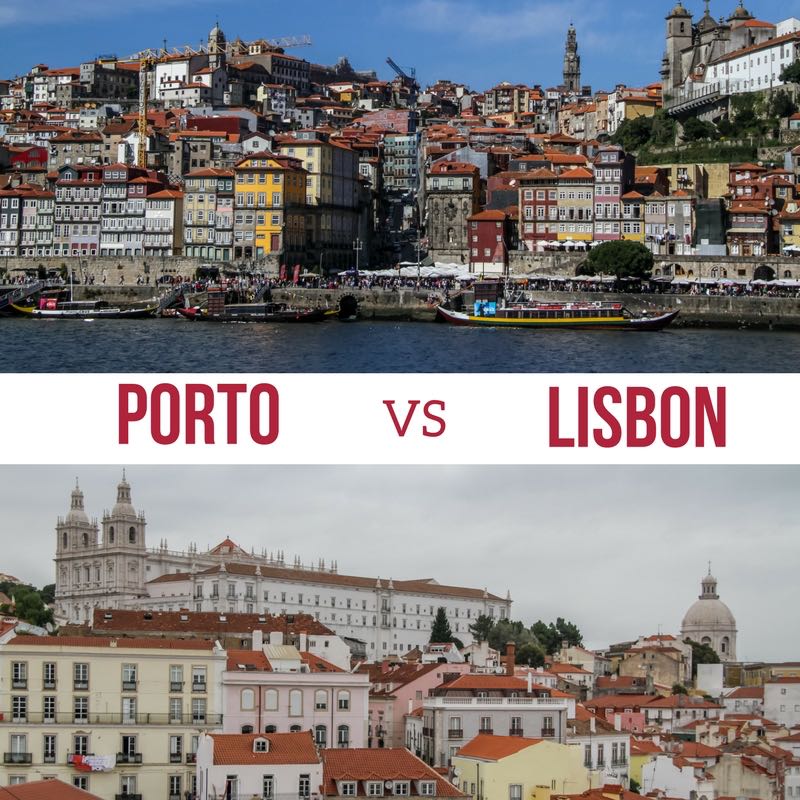(CNN) — Lisbon has established itself as Europe’s hippest city-trip destination over the past couple of years, but now it has a rival that’s a little too close for comfort.
Portugal’s second-city, Porto, is giving the capital a run for its money as the place to go for a unique blend of history, balmy weather, culture, cooking and nightlife.
With its old riverside center designated as a UNESCO World Heritage Site, its chefs picking up a growing constellation of Michelin stars, as well as its world-beating wines and vast stretches of sandy shore on its doorstep, Porto certainty has a lot to offer, but can it really challenge Lisbon as Europe’s capital of cool?

We’ve put the two leading cities of Portugal head-to-head to find who has the best beaches, the tastiest snacks, the most opulent old cafés and trendiest boutiques.
And because we like to give the underdog a hand, we’ve asked some hardcore tripe-eaters (as the inhabitants of Porto are known — see below) to tell us why you should all be heading to their city by the sea.
They tend to hold strong opinions.
Take Rui Reininho, Portuguese rock superstar and front man with the legendary Porto band GNR.
“The baroque surprises, the escarpments of Romanesque granite, the almost obscene sincerity of the people, the impetuously golden river, the swooning camellias, the wild Atlantic filled with fish and seafood, the narrow streets awash with soap suds,” Reininho enthuses. “You really shouldn’t hesitate between Lisbon’s tropical style and the Celtic, European liberalism of Porto.”
Tripe eaters v. little lettuces
The people of Porto are affectionately known as tripeiros — roughly tripe-eaters.
The nickname comes from the city’s signature dish, tripas à moda do Porto: a mess of white beans fortified with pig’s ear, calves’ foot, cow’s stomach (aka tripe) and a cartload of other chewy bits.
Legend has it that Porto got its taste for offal in 1415, when the city’s patriotic inhabitants handed over all their meat to a Portuguese army off to war in Morocco, leaving themselves with just the offcuts.
Lisbonites, on the other hand, are called alfacinhas — little lettuces — supposedly after the cries of hawkers selling freshly cut vegetables from market gardens that surrounded the capital.
Tripeiros will say that the food habits reflect the cities’ contrasting styles: Porto is solid, no-nonsense, hardworking; Lisbon, laid-back, decadent and vain.
“It’s the people that makes Porto special,” says Sara Figueiredo, selling designer jewelry and locally crafted soaps in the gift shop of Porto’s uber-trendy Serralves arts center. “There’s all that history, but above all it’s the people here, they are so welcoming.”
Figueiredo knows her tripe — her tip for a hearty helping is the Adega do Olho, a backstreet dive devoted to old-school Porto cooking, where a plate-load of tripas will set you back 3.50 euros.
Douro v. Tagus
Both cities sit on mighty rivers rushing towards the Atlantic Ocean after flowing west from sources in distant Spanish highlands.
Lisbon’s Tagus spreads out before the city, forming one of Europe’s largest estuaries: a shimmering surface some 15 kilometers wide at its broadest point. It’s crisscrossed by little orange commuter ferries, has colonies of flamingos grazing on the far bank and reflects the sun’s rays to give the capital its milky white light.
Porto wraps the Douro in a cozier embrace.
The city rises up on steep hills on both banks (although Vila Nova de Gaia, the historic south-side wine center, is technically a separate city). Its old neighborhoods cling to the slopes and look down on a flotilla of barcos rabelos — high-prowed longboats that once carried kegs of wine down from upriver vineyards and now bob decoratively in the stream.




